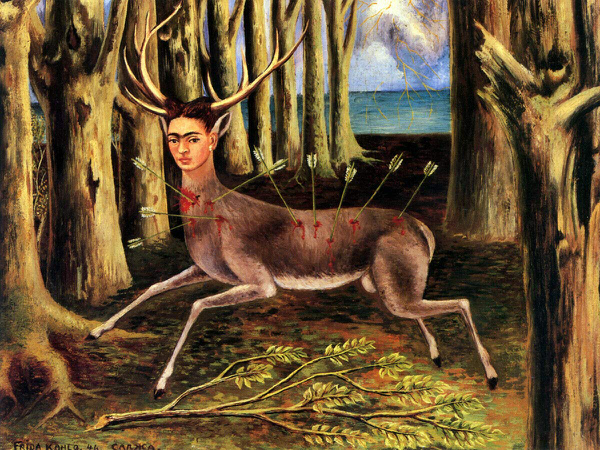Movie review by Greg Carlson
Veteran editor Carla Gutiérrez’s new documentary “Frida,” on the subject of the famed painter whose star has continued to shine with blinding incandescence since a 1980s popular cultural renaissance, premiered to mixed reviews at the 2024 Sundance Film Festival in January. Art lovers and biography hounds will be able to judge for themselves when the movie comes to Amazon Prime beginning March 14. At Sundance, Gutiérrez’s film received the festival’s Jonathan Oppenheim Editing Award in the U.S. Documentary category, and the movie’s combination of archival photographs, stock footage, journal entries, and animated reconstructions of many of Kahlo’s paintings showcases the filmmaker’s impressive skill set.
Some art historians and/or appreciators have criticized Gutiérrez with that most common of gripes: “Frida” doesn’t manage to do justice to the full breadth of the artist’s life, skipping over this or that and coming up short by not placing the work, the personal, or the political in the “proper” context. Defenders, however, would point to the (seemingly) obvious constraints of the feature-length form, arguing that one can only do so much in 90 minutes. In that sense, this chapter is as good a mediated introduction as (m)any, adding more brushstrokes to a canvas containing a multitude of interpretive explorations; the “Frida Kahlo & Contemporary Thoughts” site, for example, lists more than 15 films to investigate.
The first significant choice of style and structure is Gutiérrez’s decision to draw from Kahlo’s writings – both public and private – to guide the viewer through the journey via the artist’s own words. As read by Fernanda Echevarría, the variety of excerpts do indeed communicate an intimacy that only first-person narration can provide. The cuttings are organized and arranged along major themes that address expected preoccupations: sensuality and sexuality, Mexican identity, the life-changing and catastrophic bus-streetcar collision that would lead to dozens of operations and a lifetime of physical pain, the tumultuous relationship with Diego Rivera, the politics of struggle and revolution, etc.
As happens to powerful icons whose images convey potent shorthand messages to the masses, Frida the symbol long ago passed the point of complex critical understanding by the majority of tourists ringing up postcards, prints, mugs, and shirts in the gift shop. It can be difficult to get past the serene and self-possessed gaze of the woman whose Mona Lisa inscrutability announces more than just gender play via Tehuana dresses and upper-lip and facial hair (for more, see “Why Frida Kahlo’s Unibrow Is Important” by Georgia Simmonds). Hearing directly from Kahlo restores some of the individual who has been subsumed by the celebrity.
The second most distinctive creative decision, and the one that has perhaps caused the most division among viewers, is the use of animation by Sofía Inés Cázares and Renata Galindo to turn many of Kahlo’s iconic images into moving frames. Purists might find themselves wishing that the original paintings had instead been filmed to show texture, scale, and physical context (to at least point in the direction of Walter Benjamin’s “aura” construct), but there is something inviting about the way Cázares, Galindo and their team allow us to think about Kahlo’s choices and compositions with fresh eyes and big imaginations.
